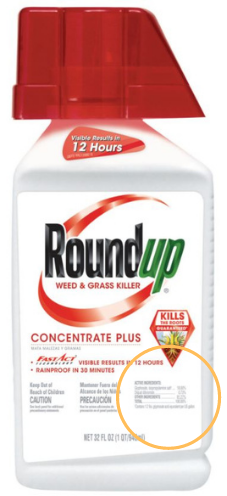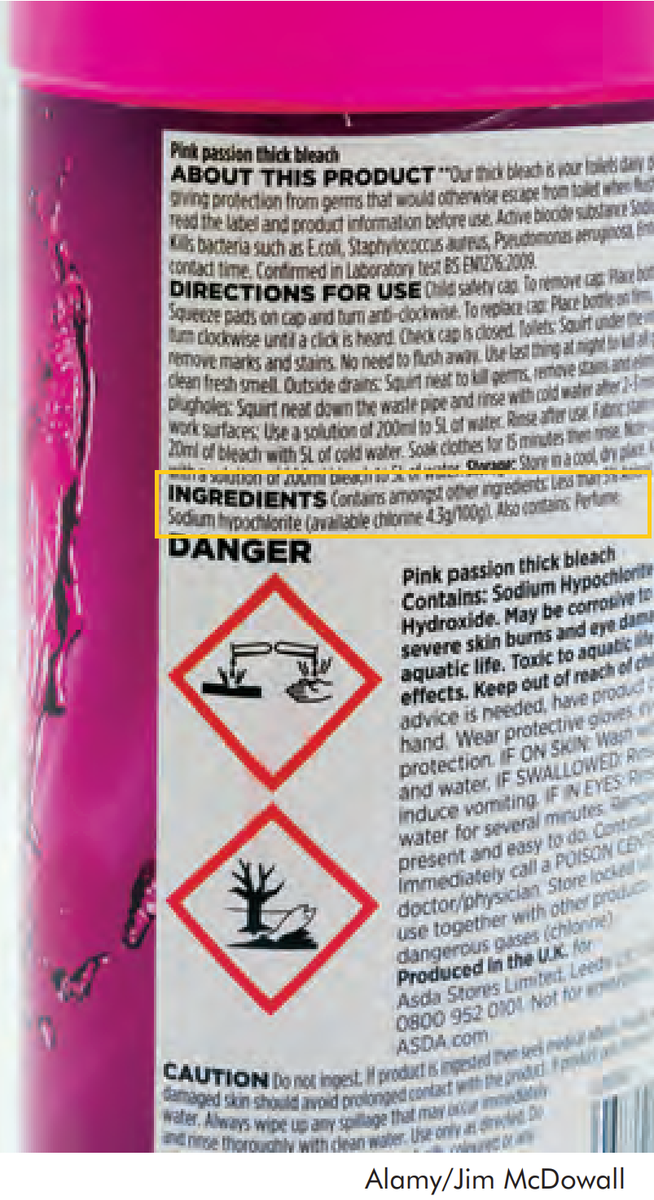Gateway on Pesticide Hazards and Safe Pest Management
How To Find Ingredients in Pesticide Products
Beyond Pesticides offers resources below to evaluate the health and ecological effects of specific chemical exposure from ACTIVE INGREDIENTS in pesticide products, as well as regulatory information and supporting scientific documents. Because various pesticide products can contain more than one active ingredient, it is important to READ the LABEL to determine chemical components.
With 192 different active ingredients and counting, it is essential to establish the connection between the use of these chemicals and their respective hazards.
View the step-by-step guide on how to search for the active ingredient(s) in pesticide products below:
- Go to U.S. EPA's Pesticide Product and Label System and enter the product name. The generic product name may vary.
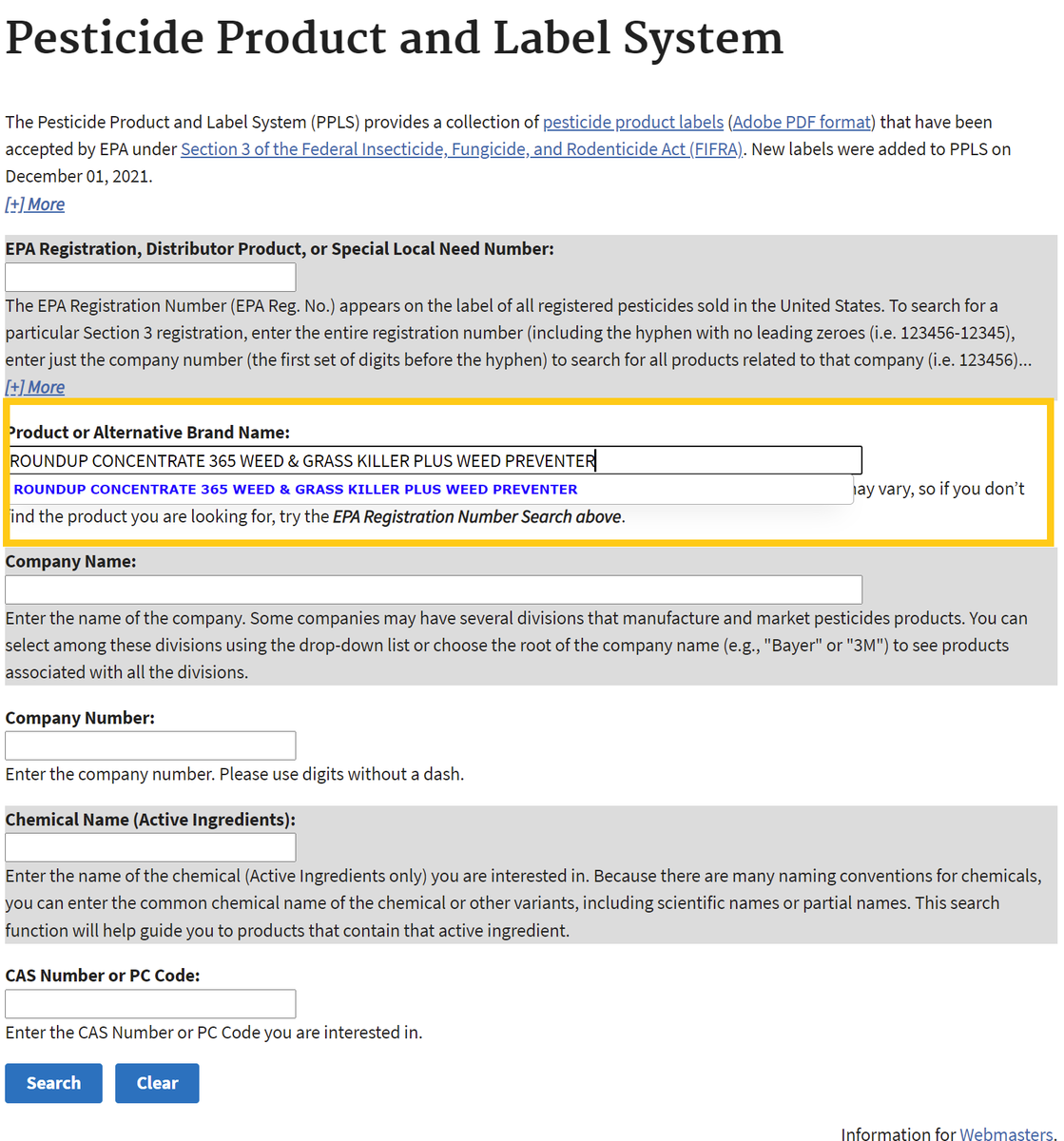
- After searching, click on the chemical ingredients tab or the link for the most recent label to find Active Ingredients.
Chemical List Label List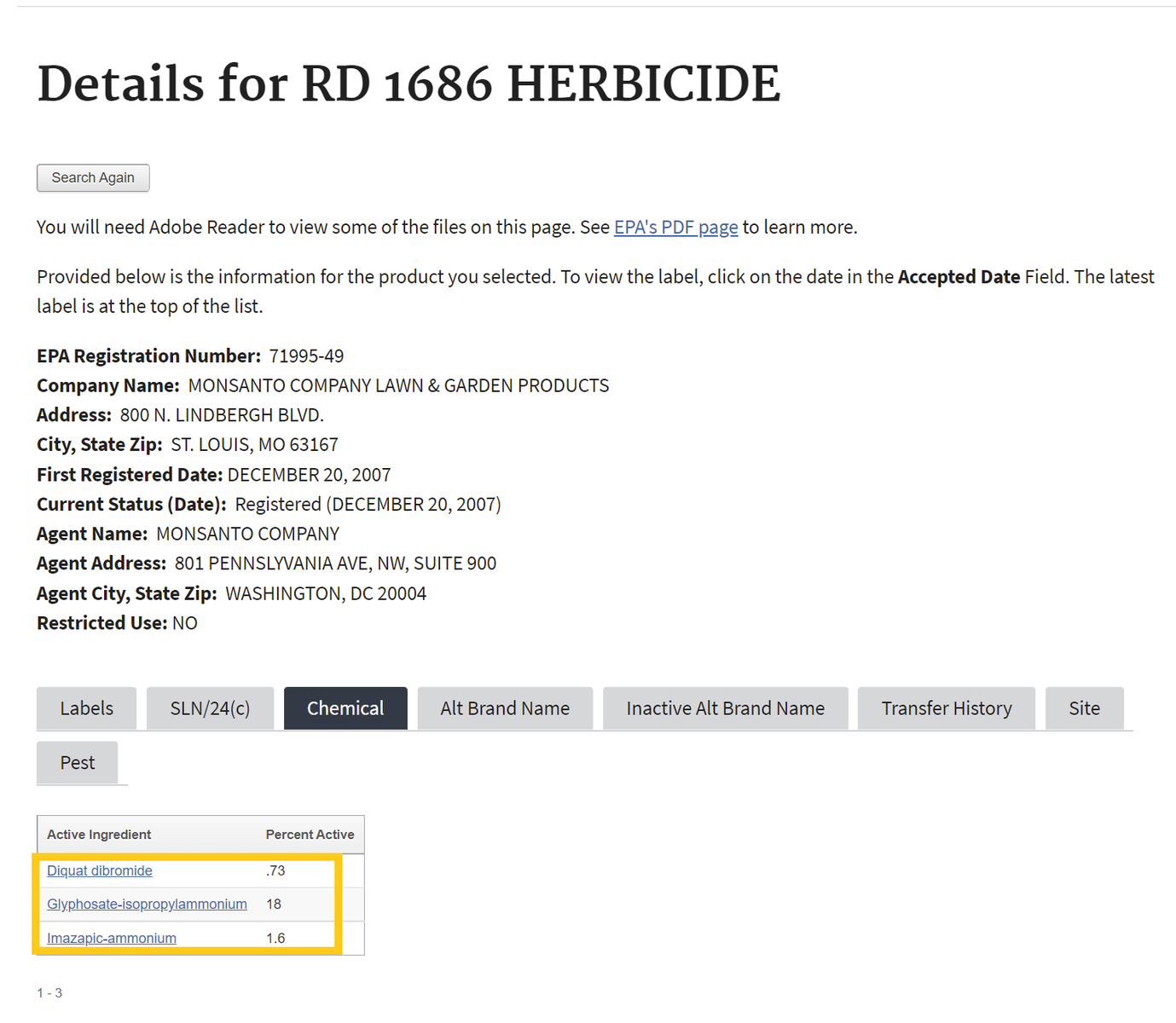
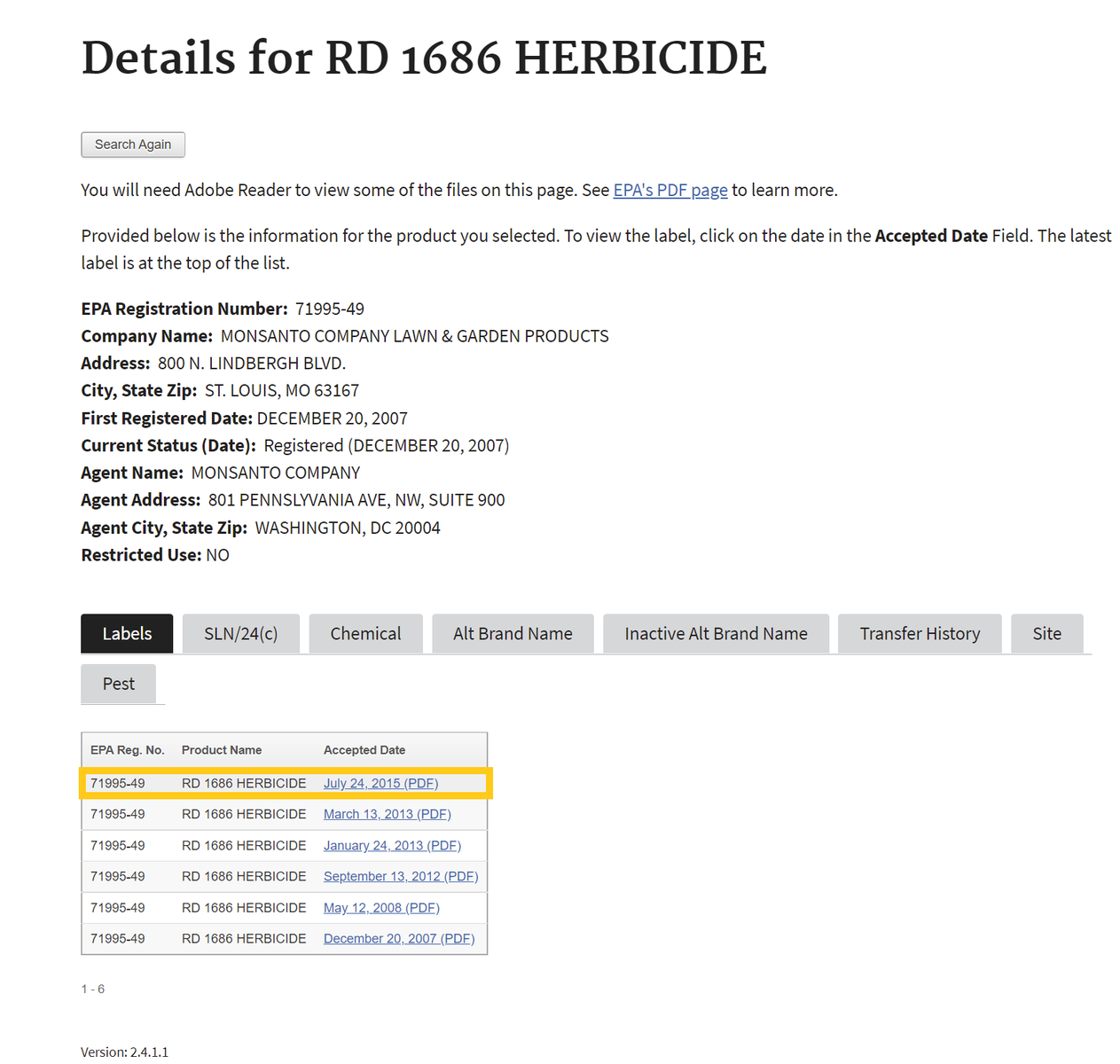
If one selects the chemical ingredients tab, skip to Step 4 . If not, proceed to step number 3 - To find the active ingredient(s) on the label, search for the page in the document containing the date of registration. Usually, the active ingredients section occurs within the first few pages of the label document.
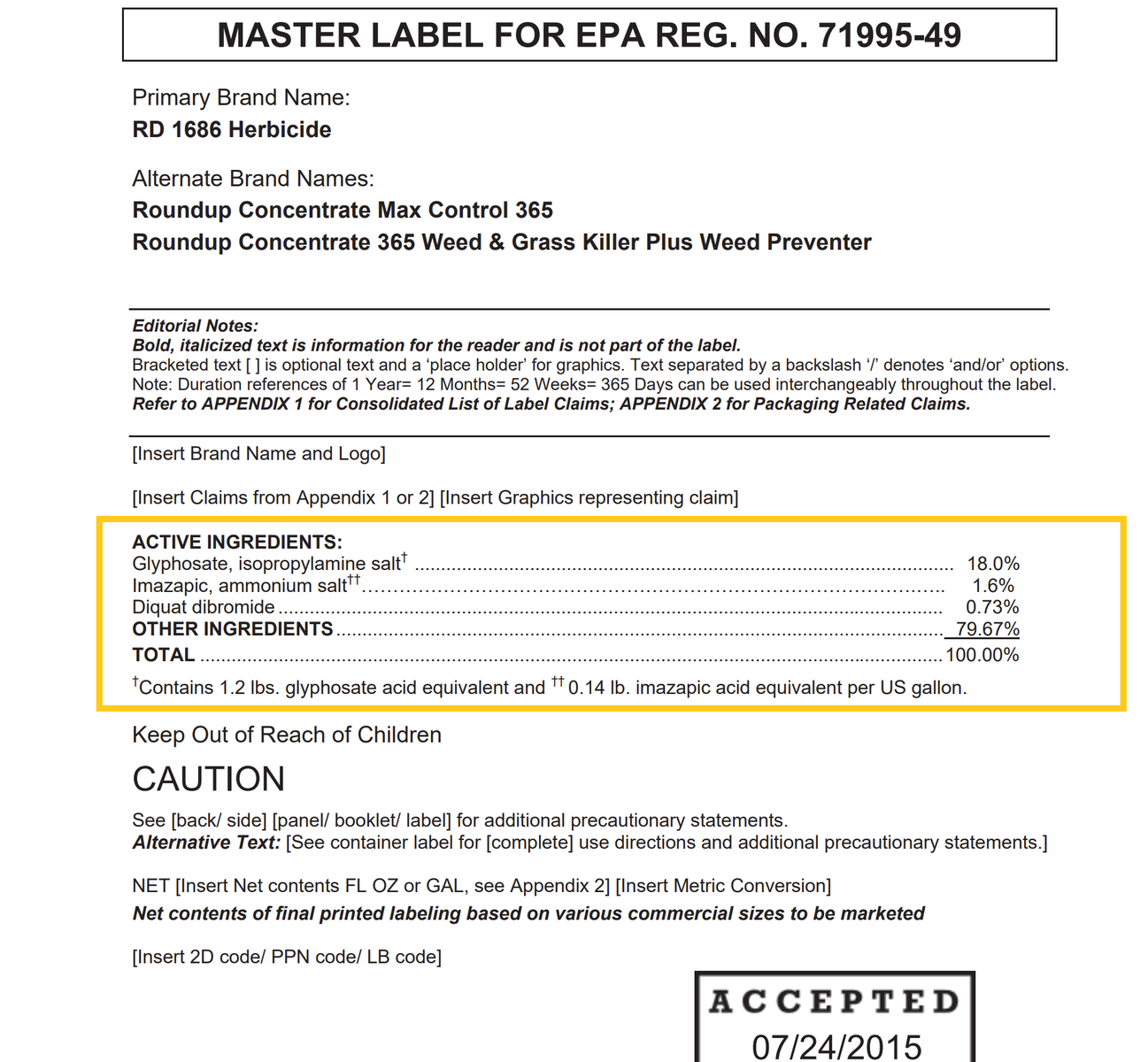
- Return to the Beyond Pesticides Gateway and search for the active ingredient name in the yellow box to the right or from the list below.
Flumethrin
General Information
- Product Names:
- Chemical Class: Synthetic Pyrethroid Insecticide
- Uses: As an ectoparasite for ticks, mites, and lice on cattle, sheep, goats, horses, and dogs, and in some cases, to treat parasitic mites in honeybee colonies.
- Alternatives: Essential Oils (like lemongrass, eucalyptus, geranium, lavender, peppermint, and citronella)
- Beyond Pesticides rating: Toxic
Health and Environmental Effects
- Cancer: Not documented
- Endocrine Disruption: Not documented
- Reproductive Effects: Yes (27)
- Neurotoxicity: Yes (8)
- Kidney/Liver Damage: Not documented
- Sensitizer/ Irritant: Yes (27)
- Birth/Developmental: Yes (27)
- Detected in Groundwater: Not documented
- Potential Leacher: Not documented
- Toxic to Birds: Not documented
- Toxic to Fish/Aquatic Organisms: Yes (27)
- Toxic to Bees: Not documented
Additional Information
- Regulatory Status:
- Supporting information:
- PAN Pesticides Database: Flumethrin (Pesticide Action Network)
- Daily News Archive
- "EPA Orders Warning Labels on Seresto Flea Collars Linked to Thousands of Pet Injuries, Deaths" (Center for Biological Diversity)
- Studies:
- Acaricide flumethrin-induced sublethal risks in honeybees are associated with gut symbiotic bacterium Gilliamella apicola through microbe-host metabolic interactions. Qi, S., Al Naggar, Y., Li, J., Liu, Z., Xue, X., Wu, L., El-Seedi, H.R. and Wang, K., 2022. Chemosphere, 307, p.136030.
- The negative effect of flumethrin stress on honey bee (Apis mellifera) worker from larvae to adults. Zhen Li, Heyan Yang, Longtao Yu, Chen Liu, Xiaobo Wu, The negative effect of flumethrin stress on honey bee (Apis mellifera) worker from larvae to adults, Pesticide Biochemistry and Physiology, Volume 188, 2022, 105289, ISSN 0048-3575, https://doi.org/10.1016/j.pestbp.2022.105289.
- The synergistic action of imidacloprid and flumethrin and their release kinetics from collars applied for ectoparasite control in dogs and cats . Stanneck, D. et al. (2012) ‘The synergistic action of imidacloprid and flumethrin and their release kinetics from collars applied for ectoparasite control in dogs and cats’, Parasites & Vectors, 5(1). doi:10.1186/1756-3305-5-73.
- Urinary pesticide biomarkers from adolescence to young adulthood in an agricultural setting in Ecuador: Study of secondary exposure to pesticides among children, adolescents, and adults (ESPINA) 2016 and 2022 examination data. Parajuli, R. et al. (2025) Urinary pesticide biomarkers from adolescence to young adulthood in an agricultural setting in Ecuador: Study of secondary exposure to pesticides among children, adolescents, and adults (ESPINA) 2016 and 2022 examination data, Data in Brief. Available at: https://www.sciencedirect.com/science/article/pii/S2352340925006067.
- Prenatal Insecticide Exposure and Adverse Birth Outcomes: Evidence for Mediation via Disruptions in Amino Acid and Acylcarnitine Metabolism. Ma, Y. et al. (2025) Prenatal Insecticide Exposure and Adverse Birth Outcomes: Evidence for Mediation via Disruptions in Amino Acid and Acylcarnitine Metabolism, Environmental Science & Technology. Available at: https://pubs.acs.org/doi/10.1021/acs.est.5c13454.








.png)
